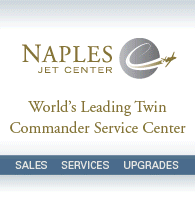The Model 560F was the twelfth one to be placed into production, the first two by the Aero Design & Engineering Company, as a subsidiary of Rockwell-Standard Corporation at Bethany (Wiley Post Airport) in Oklahoma City. The next 61 were built by Aero Commander Inc. as a subsidiary of Rockwell-Standard Corporation, and the last 10 were produced by the Aero Commander Division of Rockwell-Standard Corporation.
The 73 examples were built between November 1960 and October 1965, with serial numbers in the range 560F-951-1 through 560F-1496-73. Of these, nine were initially certified in 1960; 28 in 1961; 17 in 1962; 11 in 1963; 6 in 1964; and 2 in 1965.
A factory document describes the Model 560F, under Wing Drawing 5170045, as “the same as the 680F except, a) Gross weight reduced to 7,500 pounds and b) Lycoming IGO-540-B1A engines. Certified on February 8, 1961, per CAR 3, May 15, 1956, Amendment 3-3 and 3-4.” The Type Certificate Data Sheet says, “Same as Model 680F except unsupercharged engine and reduced gross-weight.” The Model 560F was indeed certified on February 8, 1961 under Type Certificate 2A4 and had 350 hp Lycoming IGO-540-B1A engines, although the last 10 had the -B1C variant. Both versions used 93.5-inch-diameter three-blade Hartzell HC-B3Z30-2B (15o) propeller hubs with 9349-model blades.
Gross weight of the 560F is 7,500 pounds.
Visually, the Models 560F and 680F are identical. One example, s/n 560F-1422-69, had Mr. RPM STC No. SA2691WE (actually for the 680F/FL series) complied with, using the 400-hp Lycoming IO-720-B1B engine with 84.625-inch-diameter Hartzell HC-A3VK-2A/V8433 propellers.

Scanned from an un-numbered negative in a factory collection, N6255X is s/n 560F-1124-34 and is seen here at Bethany-Wiley Post, no doubt undergoing a compass swing before delivery. It is finished in a custom paint design in Polar White, Baltic Blue, and Capri Blue. Certificated on December 28, 1961, it has a Chamberlain 2001K-B radome for a Bendix Doppler system under STC SA265EA. It was sold, via factory distributor Holladay-Aero Inc., of Arlington, Virginia, to The Bendix Corporation, Radio Division, Baltimore, Maryland, which owned it until sold on July 27, 1972.
One anomaly regarding the 560F is why it was included on Type Certificate 2A4. All the other Twin Commander models on this type certificate have either supercharged piston engines or turboprop engines. It seems strange that the Model 560F was not included on Type Certificate 61A instead because, like the 560F, all of the models on that type certificate have normally aspirated (non-turbocharged or supercharged) engines.
Barry Collman’s lifelong interest in airplanes began when he was growing up in a house located underneath the downwind leg to busy Northolt aerodrome, an R.A.F. base near London-Heathrow airport. As a young teenager he discovered airplane “spotting”–hobbyists’ observation and logging of aircraft by make, model, and registration number. The hobby began to grow into a passion as Collman joined a club of like-minded spotters. At one point he purchased a copy of the January 1966 U.S. Civil Aircraft Register, and thumbing through it came upon the Aero Commander. He was hooked. Eventually he acquired every available FAA microfiche file on Commanders, and since 1995 has made annual pilgrimages to Oklahoma City to sift through FAA records. He now has a database with more than 96,100 records as well as a collection of negatives, slides, photographs, digital images, magazines, brochures, knick-knacks–and a very understanding wife. This series on Commander production history originally was written for the Twin Commander Flight Group, of which he is an enthusiastic member.


 Scanned from a slide taken by an unknown photographer, D-IBEF is s/n 560F-1033-12 and is seen here at Samedan, Switzerland, probably in April 1967. Named “die Balz,” it is in Paint Design #2-60—Polar White, Spanish Red, and Squadron Blue. As a new aircraft, it was first registered on April 5, 1961 to the Aero Commander distributor in Germany, Motorflug GmbH., of Koblenz-Karthause. Sadly, it was lost in an accident at Kempten-Durach, West Germany on May 3, 1967. The Model 560F is visually the same as the 680F, both having three intakes at the font of the nacelle, whereas the 500B, 500U, and 500S have only two such intakes.
Scanned from a slide taken by an unknown photographer, D-IBEF is s/n 560F-1033-12 and is seen here at Samedan, Switzerland, probably in April 1967. Named “die Balz,” it is in Paint Design #2-60—Polar White, Spanish Red, and Squadron Blue. As a new aircraft, it was first registered on April 5, 1961 to the Aero Commander distributor in Germany, Motorflug GmbH., of Koblenz-Karthause. Sadly, it was lost in an accident at Kempten-Durach, West Germany on May 3, 1967. The Model 560F is visually the same as the 680F, both having three intakes at the font of the nacelle, whereas the 500B, 500U, and 500S have only two such intakes. 
